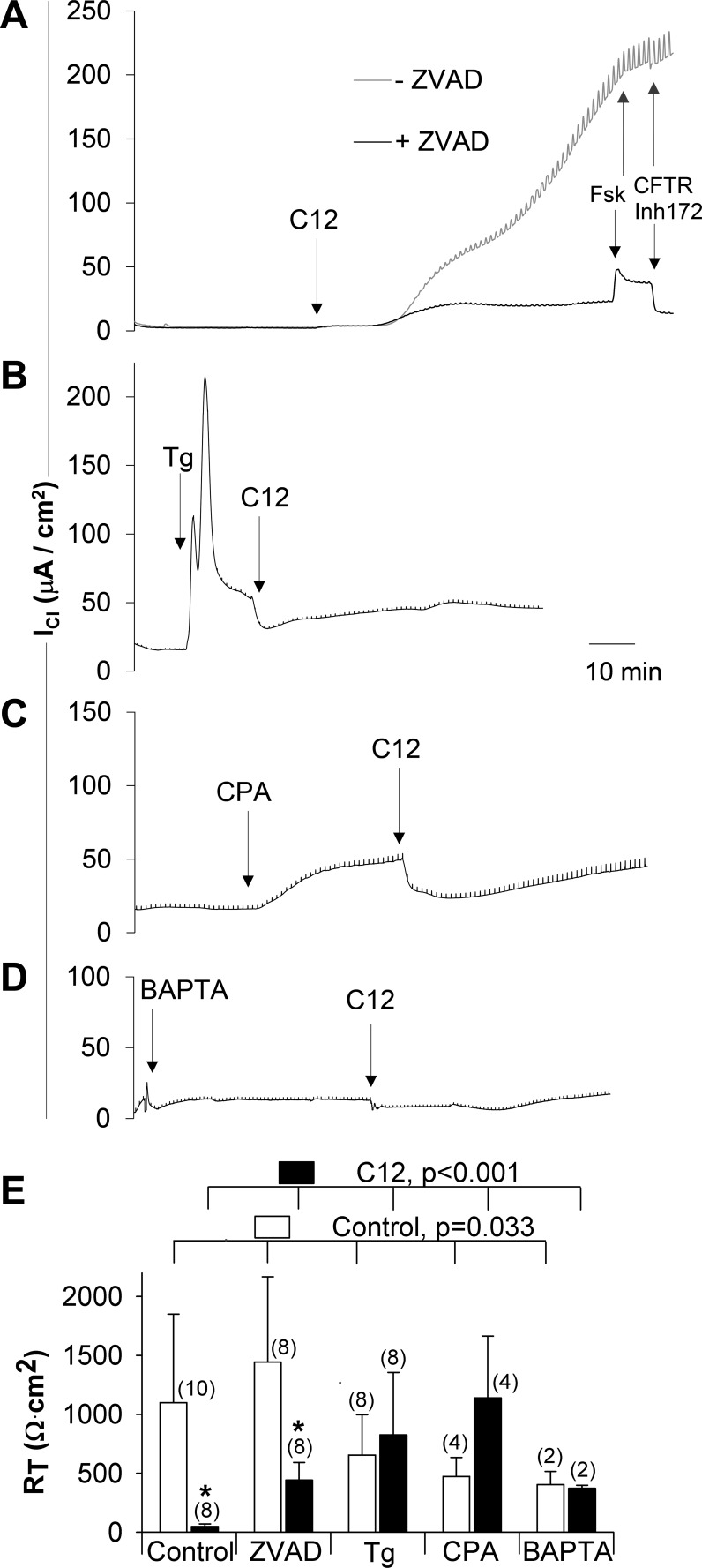Fig. 1.
N-(3-oxododecanoyl)-homoserine lactone (C12) disrupts transepithelial resistance (RT) of Calu-3 cell monolayers; carbobenzoxy-valyl-alanyl-aspartyl-[O-methyl]-fluoromethylketone (ZVAD), thapsigargin (Tg), cyclopiazonic acid (CPA), and Ca2+-free solution + BAPTA-AM prevent C12's actions. Calu-3 cells grown on Snapwell inserts were mounted in Ussing chambers for measurement of transepithelial Cl currents (ICl) and RT. A: a monolayer was pretreated with C12 (100 μM, apical) and another with ZVAD (50 μM), and C12, forskolin (Fsk, 10 μM), and CFTRinh 172 (10 μM) were added (arrows). B: a monolayer was pretreated with Tg (1 μM) for 15 min and then with C12 (100 μM, apical). C: a monolayer was treated with CPA (10 μM) for 20 min and then with C12. D: a monolayer was treated with Ca2+-free solution + 10 μM BAPTA-AM for 30 min and then with C12. E: summary of RT measurements in Calu-3 cells. Open bars: control, ZVAD, Tg, CPA, and Ca2+-free solution + BAPTA-AM; filled bars: control + C12, ZVAD + C12, Tg + C12, CPA + C12, and Ca2+-free solution + BAPTA-AM + C12. Values are means ± SD for number of experiments shown in parentheses above bars. Statistical comparisons by ANOVA: P < 0.03, control vs. ZVAD, Tg, CPA, and BAPTA-AM; P < 0.001, C12 vs. ZVAD + C12, Tg + C12, CPA + C12, and Ca-free solution + BAPTA-AM + C12. *P < 0.001, control vs. C12 and ZVAD vs. C12 + ZVAD (by t-test).

